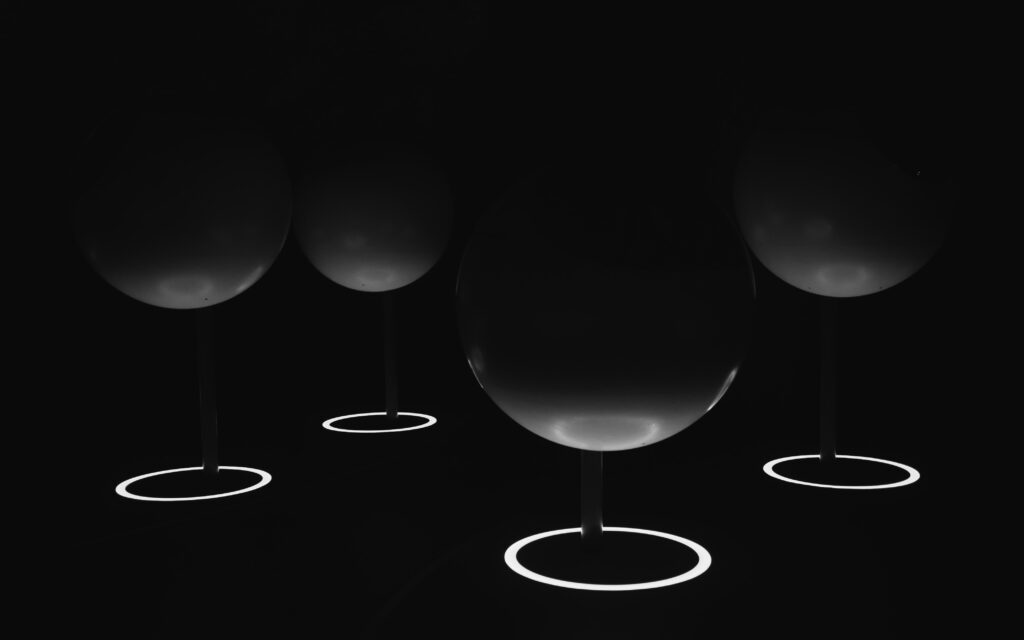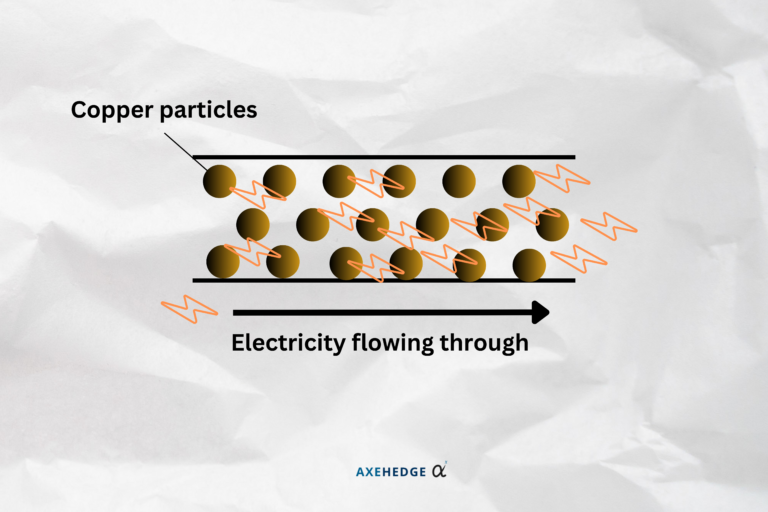The second triangle: the Descending Triangle
Read MoreLK99: Big, If True
How the LK99 superconductor can revolutionize finance?

Over the past few weeks, the world of material physics has been rocked by a shocking discovery — the LK99. It started with a group of South Korean scientists who held onto their tutor’s idea that a superconductor could operate at room temperature. Now, before we get there, let’s see what these superconductors are and why are they so important.
Superconductors are a type of conductors that can conduct electricity but at zero resistance. Imagine the wires in your phone charger, the copper wires are made up of many copper particles, and electricity will flow through and reach your phone battery.

What will happen is that the copper particles have vibrating ions, much like every other particle in a solid matter. The issue here is that when the ions vibrate, the electricity, or more precisely the electrons, tend to collide with them more often. Imagine trying to marathon through a mosh pit, it’s either you elbow someone in the face, or you’ll have someone’s elbow for dinner.
That is what we call resistance. Resistance can lead to a lot of undesirable things, such as electricity wastage. Your phone charger tends to heat up because the wasted electricity escapes in the form of heat. Imagine it like this, there are 1,000 elves working tirelessly to deliver you 1,000 boxes of chocolates. However, due to hiccups during delivery, some of these chocolates are lost and you’ll only get 950 boxes. That’s a lot of lost chocolates, isn’t it? But we’ll touch on that later.
Back to superconductors. To reduce this resistance, a Dutch physicist, Heike Kamerlingh Onnes, thought “Hey, particles wouldn’t move too much when they’re cold, right? What if we freeze the heck out of these things?”. And he did. What he realized is that once mercury goes to a temperature below -269°C, the resistance goes to 0. You’ll get all 1000 boxes of chocolates the elves made for you!
This concept is then applied to create superconductors used in nuclear fusion reactors, particle accelerator laboratories, and a super-goddamn-fast train called the maglev (magnetic levitation) that can go up to 501km/h.
That’s cool! Right? The issue, however, is that these superconductors are hard to maintain because you need to make sure it stays at a super-low temperature. They would require liquid helium to keep it cool, and liquid helium is growing more and more scarce. This is where LK99 (if proven to be true) can be the breakthrough of an era.
Recently, some of the South Korean scientists we mentioned published a paper, claiming that they succeeded in creating the LK99, a superconductor that can operate at room temperature with ambience pressure. Since then, the whole world went on a race to either prove it or debunk it.
To make it more interesting, a random Twitter user (now X) with an anime profile picture claims that they managed to replicate LK99 with scraps they have in their apartment while mocking people who doubt them, given how ‘easy’ it actually is to do.
I have Monday still technically.
— Iris (@iris_IGB) July 30, 2023
Time to take out big guns pic.twitter.com/v1nOaKuYbw
Apart from that, there are increasing claims that LK99 managed to be replicated and that it has shown superconductive traits. However, just to keep ourselves grounded, there are only a few of these successful replications that managed to record 0 resistance. Currently, the world (per a nerd’s definition of what a world is) is going back and forth still trying to see if it is going to get proven or debunked.
What would LK99 mean for the market?
Of course, we’ll have to ask the holy grails of question: explain it in terms of… money.
Now, let’s get to it — superconductors can be made using materials like tins or aluminum, which is not expensive. However, maintaining that low temperature has been the issue so far. The process of creating liquid helium itself is expensive as it must be cooled down to 4 K (-296 Celsius).
Electrical grid
If LK99 really works, we’re looking at massive improvements in efficiency. The electrical grids in the US would usually lose around 5% of the power that is generated by their power plants, and this is translated to around $6 billion worth of wastage annually. Imagine, an amount of electricity that is big enough to power the whole Central American region four times (per NRDC) is just lost in the process.
If this wastage can be reduced, the cost of electricity may be reduced, and the benefit (hopefully) will spill over to the consumer side as well.
Superconductors can also be used as a medium for energy storage, since theoretically speaking, a superconductor will allow electricity to move along it without any energy loss, electricity can flow inside it forever in a loop. This will help provide a medium on which energies generated by renewable energy plants can be better stored and utilized, putting an edge to renewable energy transitions.
EVs
With lower electricity costs, EVs may benefit massively from it. Consumers will now look at much better alternatives compared to fuel cars. Not just that EVs are now lavish with government incentives, but they may soon look at savings in terms of charging costs. As of now, the cost of charging a Tesla is around $15.52 on average. Imagine if that can be further slashed.
Putting that aside, some of the components in EVs can also be further improved by applying these superconductors to them, especially in their batteries. However, the practicability of that may need further exploration as there are many factors to consider such as the cost to manufacture LK99 (if proven true), durability of the materials, and the R&D cost to incorporate it into a whole vehicle.
Quantum computers
A next possible future that can emerge is that quantum computing may now be for everyone, although whether everyone needs it or not is another thing. Currently, many quantum computers have chips that are made from superconducting materials. Hence, quantum computers are placed under great care — which entails hundreds of thousands, if not millions, to maintain.
Imagine if there is something that can sash those prices. It wouldn’t be a far-fetched idea to see corporations flocking in a larger number into it. Finance firms can also leverage better computing power, especially quants.
That is if we speak of quantum computers alone. There can also be a possibility of high-power chips being incorporated into our daily devices such as our gadgets! Although there isn’t much need for that right now unless you’re using software that requires heavy computing such as running AI development, physics modeling, or even running 20 tabs of Google Chrome all at once without crashing your PC!
AI
Currently, developments of Artificial Intelligence (AI) require a lot of computing power. This is why we’ve seen Nvidia getting hyped up in the past months because they dominate the market when it comes to providing the hardware that is good enough to handle all the necessary processes to develop AI.
If LK99 is proven to be what it claims to be, the path toward AI development will be further accelerated and we may soon see a world filled with AI, as dystopian as it sounds.
Oh, and we might be looking at flying hoverboards too!
Bottom Line
As far as we know:
- The South Korean scientists did publish the paper.
- They did claim that the LK99 possesses superconductive traits.
- A few claimed to have successfully replicated it.
- Some claim that the material does show superconductive traits.
However, we also know that:
- The paper is yet to be peer-reviewed.
- Many attempts to replicate it have also failed.
- Some of those who are successful found it to be highly conductive, but not to a point of 0 resistance.
- People are still trying to see if it will be proven or debunked.
The key takeaways/market update is a series by AxeHedge, which serves as an initiative to bring compact and informative In/Visible Talks recaps/takeaways on leading brands and investment events happening around the globe.
Do keep an eye out for our posts by subscribing to our channel and social media.
None of the material above or on our website is to be construed as a solicitation, recommendation or offer to buy or sell any security, financial product or instrument. Investors should carefully consider if the security and/or product is suitable for them in view of their entire investment portfolio. All investing involves risks, including the possible loss of money invested, and past performance does not guarantee future performance.
Trading Dow Pattern the Triangle Pattern (Part 1)
The first triangle: the Ascending Triangle
Read MoreFunds: Equity Funds (Part 3)
How to choose between equity funds based on companies’ earnings...
Read More



